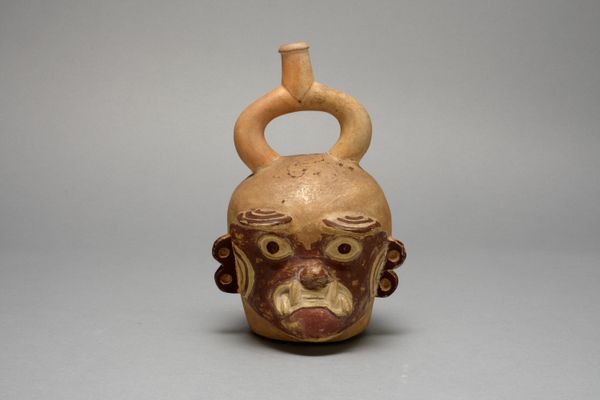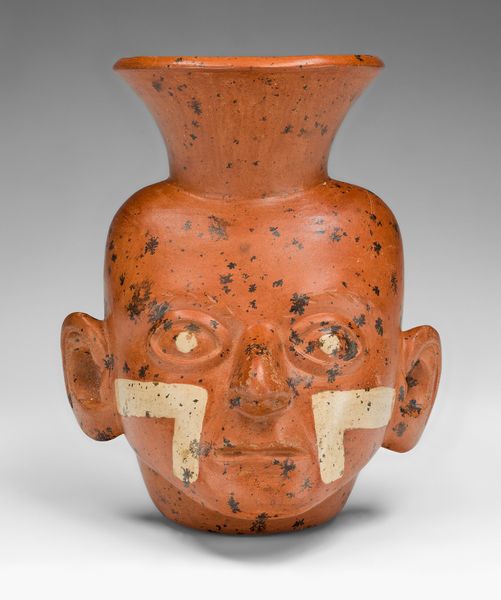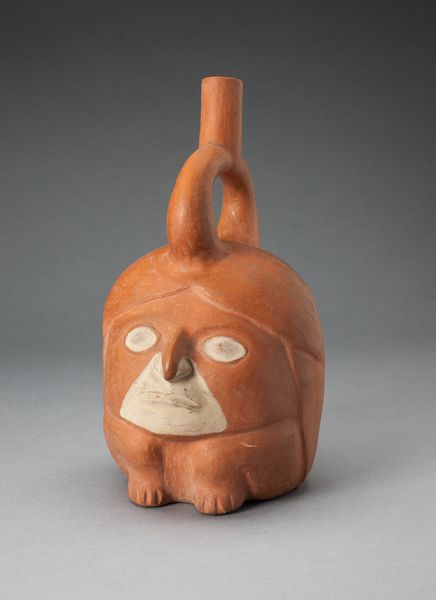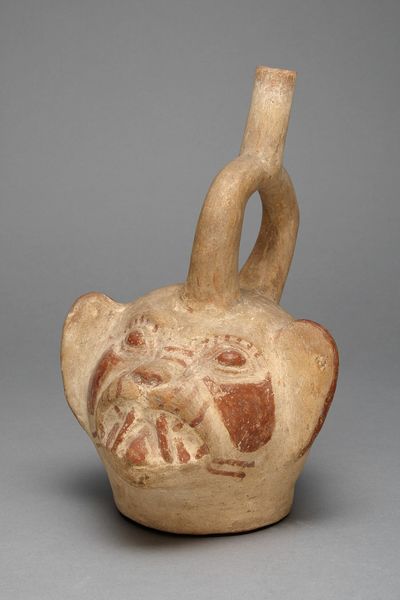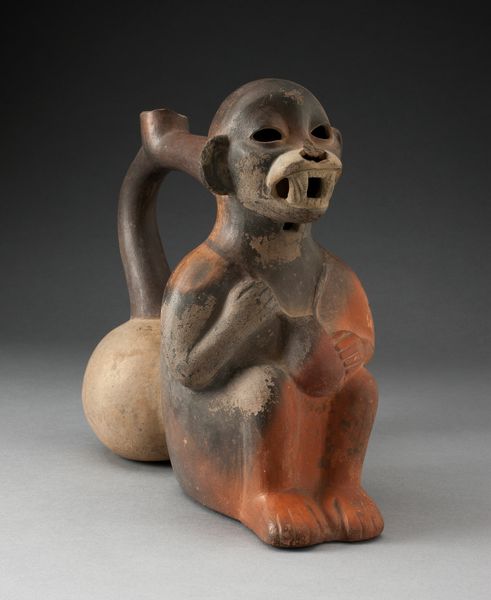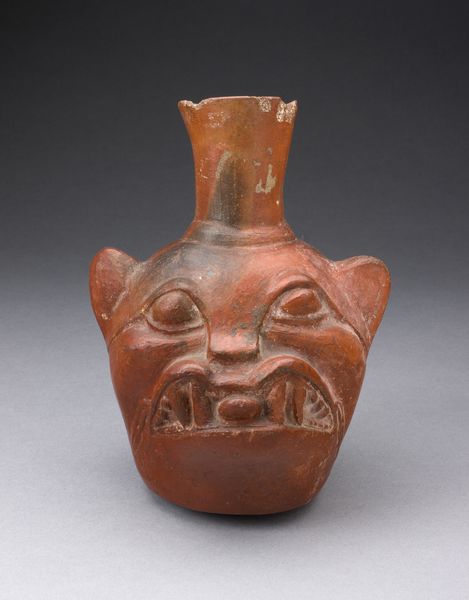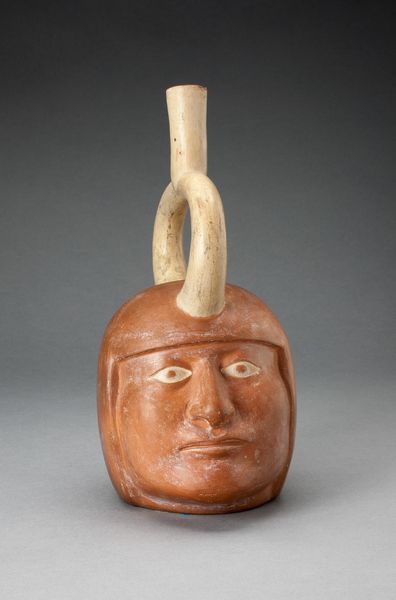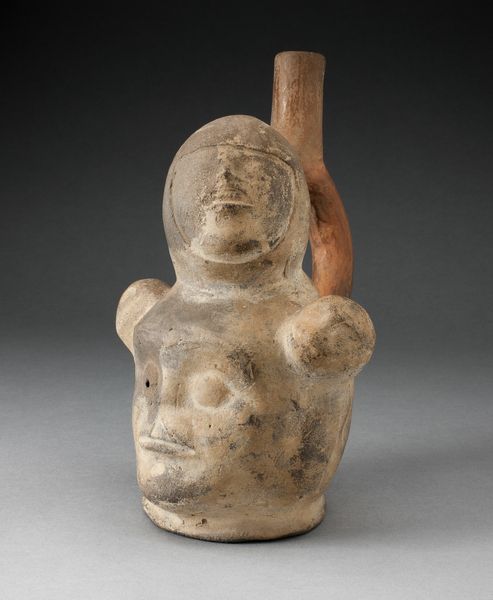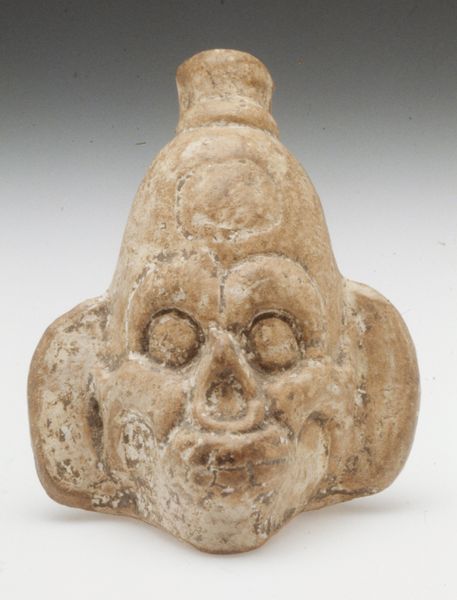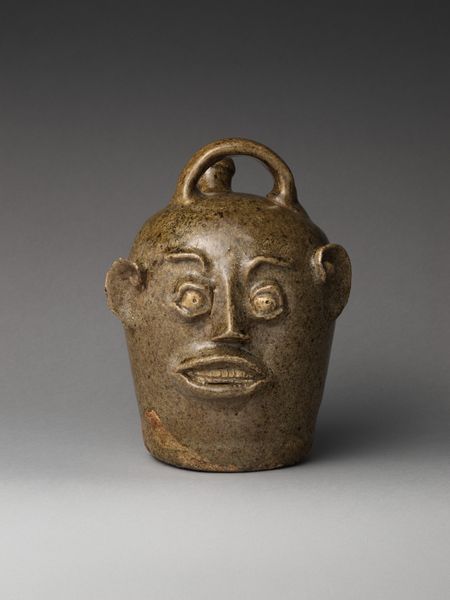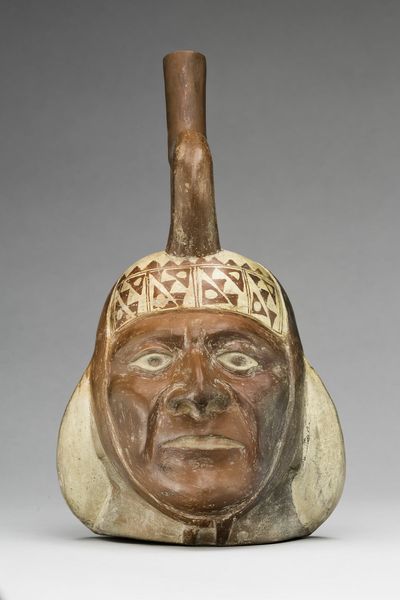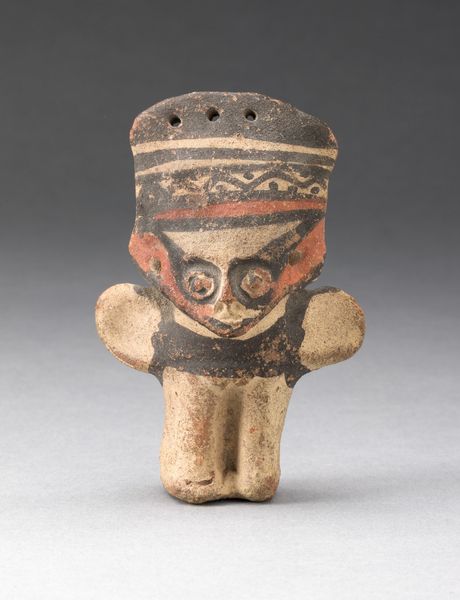
ceramic, sculpture, terracotta
#
ceramic
#
sculpture
#
terracotta
#
indigenous-americas
Dimensions: H. 24.1 cm (9 1/2 in.)
Copyright: Public Domain
Curator: This striking piece is a Moche ceramic vessel dating from around 100 to 500 AD, currently residing at The Art Institute of Chicago. It's molded into the shape of a human skull, a surprisingly popular theme for these ancient artists. Editor: Whoa, a skull? My immediate thought: it’s strangely… cute? I mean, those wide, painted eyes and the somewhat goofy grin make it hard to be truly intimidated. And is that a spout on top? Like some sort of macabre teapot? Curator: It IS intriguing, isn't it? It makes me wonder, did the Moche have the same reaction to the skull we do – an image linked to death? Or did it hold other meanings too, perhaps connected to warriors and sacrifices? The red ochre paint emphasizes the features, giving it this permanent grimace. Editor: Well, the skull as symbol has definitely shape-shifted over time. You see it used everywhere: as memento mori in Vanitas paintings of the Dutch Golden Age and even as a pirate emblem, an image we continue to interpret as signifying toxicity and danger. But in the case of this ancient sculpture I can perceive strength more than fear; like, this vessel belongs to a culture that looked death in the face without flinching. Curator: Absolutely! The Moche were incredibly sophisticated in their artistry. Notice the slightly elongated cranium? Skull modification was practiced in many ancient cultures; was it just fashionable or was it about tribal differentiation? Or maybe this sculpture even represents someone specific, some celebrated figure who exemplified bravery? Editor: It certainly has a kind of individuality to it, the artist may have known well the skull itself. When you observe symbols over wide time spans you may encounter images repeating while adapting in meaning. I wonder whether such practices in shaping the skull as part of rites could symbolize access to transcendental dimensions? The form is powerful indeed. Curator: The practical side of me always wonders what these vessels held, what liquids were poured through that spout. Were they part of rituals? Daily use? Was it connected to that idea of shaping consciousness? We might not ever know definitively, but this object certainly invites you to weave narratives and imagine its place in Moche society. Editor: That’s what's great about studying cultural icons - you begin in observation, and end in questions! It truly stirs my curiosity to investigate this a bit more, because there’s something to be explored between that skull grin and liquid flow of that vessel's purpose… Thank you.
Comments
No comments
Be the first to comment and join the conversation on the ultimate creative platform.
